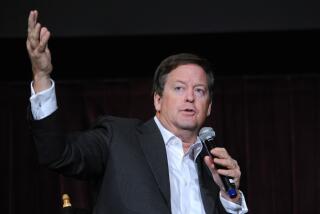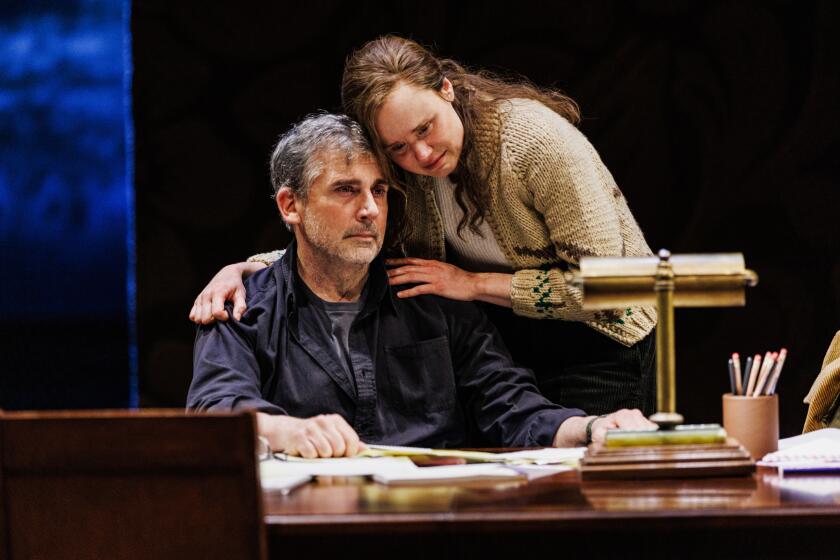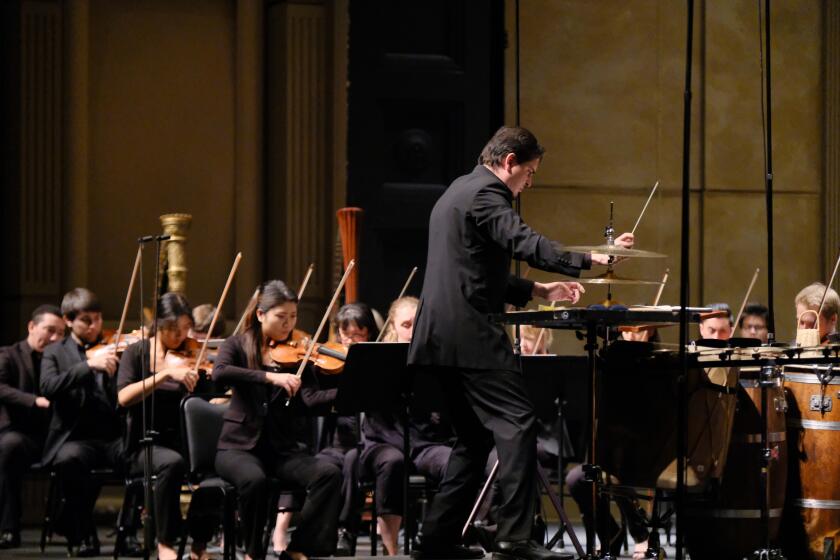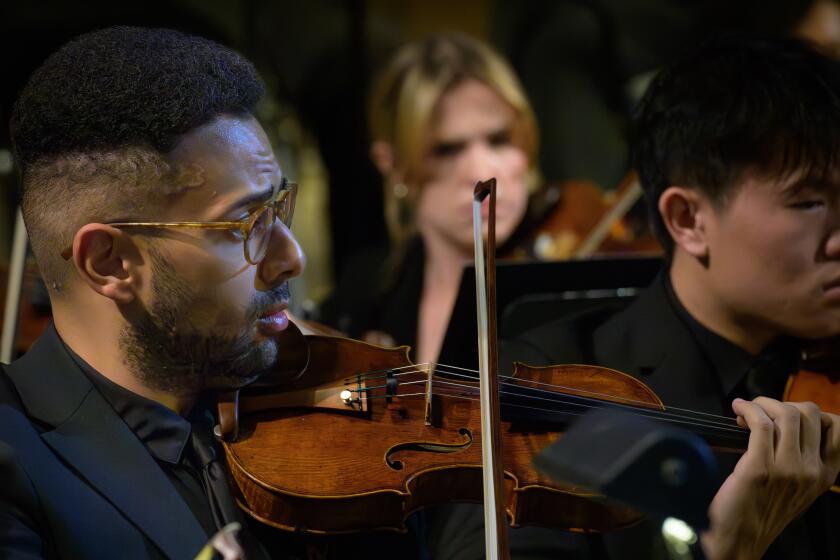Photographers’ Development
Twenty-three years is a significant chunk of time in the life span of an art venue. For BC Space--a funky downtown Laguna Beach photography gallery whose unmarked door leads directly up a flight of stairs--those two decades-plus have witnessed a remarkable tide of unconventional work.
To celebrate this history, owner Mark Chamberlain (the “C” of BC, founded with former partner Jerry Burchfield) has opened the first of a projected trio of exhibitions. He asked each photographer BC has shown to send both an early piece and a recent one.
While a few of these artists have become well known, others remain obscure. Some were technical pioneers; others were seemingly obsessed with personal demons; still others worked in the shadow of more innovative practitioners of a particular way of seeing. During the past couple of decades, some have found fresher, more striking ways of seeing while others became mired in academicism or cliche.
The brightest star of the 20 photographers in this portion of the exhibition (through Dec. 21) is Jo Ann Callis, who met photographer Robert Heinecken when she was a sculpture student at UCLA in the early ‘70s and discovered--as she said in a 1989 interview--that “photography allowed me to express some emotional qualities I wasn’t able to before.”
Callis, who had her first BC exhibit in the late ‘70s, has gone on to show at major institutions, including the Museum of Contemporary Art in Los Angeles. As it happens, her recent work has involved making sculpture for her photographs.
In “Woman and Lilies,” from 1980, Callis created a mysterious feeling of tension with the image of a woman hiding part of her face with her hand as she casts a looming shadow against flowered wallpaper. The tension comes partly from the woman (Is she brushing away a tear? Has she been slapped?) but also partly from the wallpaper, an unsettling pattern of dark splotches crossed by floating lilies.
In Callis’ newer piece, “Domestic Set-Up,” the decor--a red textured armchair, textured and patterned wallpaper--becomes an event in itself. Even the “upholstered” frame points to the lurid artificiality of the image. While this is artful stuff, it doesn’t resonate as memorably as the work that produces chilling psychological effects.
German-born Karl Gernot Kuehn, who worked in the film industry and is known for his photographs of “hidden” Los Angeles, is represented by two views of aging. A luminous 1983 silver gelatin print of elderly silent film actress Luise Rainer sets off her delicately boned, ready-for-my-close-up face in a pool of light, while the derelict Boulevard Theater becomes an eerie urban ruin under cover of night.
Graham Howe’s two prints--shot nearly two decades apart--show a marked development in personal vision. An Australian photography expert who runs Curatorial Assistance, an exhibition service in Pasadena, and has shown his own work worldwide, Howe shot “Cactus” in 1977, seemingly in thrall to the emerging New Topographics approach to landscape photography but without its pitiless edge.
Howe takes a wittier, more personal approach in a four-part 1994 print. “Nature’s Dirty Little Secret” teasingly recalls Edward Weston’s voluptuous sand dunes with images of hands stroking or pointing out “found” male and female sexual organs modeled in the sand.
Some of the photographers have pursued pretty much the same course over the years, altering only slightly.
In 1977, Laurie Brown made a stunning multipart silver gelatin print, “Land Curvature #6,” that lovingly tracks every clot of earth on a hill crisscrossed with tractor tracks, evoking the intersection of landscape and human encroachment in a calculatedly neutral way. Eighteen years later, in “Convergence,” she juxtaposes a view of a hilly tract home site with an old stereoscopic view of mounds of earth near a beach, suggesting that the impulse to sculpt landscape for human ends wasn’t born yesterday.
The show contains quite a few clunkers, pieces that seem woefully unoriginal despite appeals to fetishism or stylish academic art. But there are some happy surprises, such as machinist Fritz Cramp Smith’s campy mixed-media Cibachromes featuring tiny male nudes swimming and clambering about in a lush, frankly fake natural dream world.
* “BC XXIII: Committed to the Light,” through Dec. 21 at BC Space Gallery, 235 Forest Ave., Laguna Beach. Hours: 1-5:30 p.m., Tuesday-Friday. Free. (714) 497-1880.
More to Read
The biggest entertainment stories
Get our big stories about Hollywood, film, television, music, arts, culture and more right in your inbox as soon as they publish.
You may occasionally receive promotional content from the Los Angeles Times.






